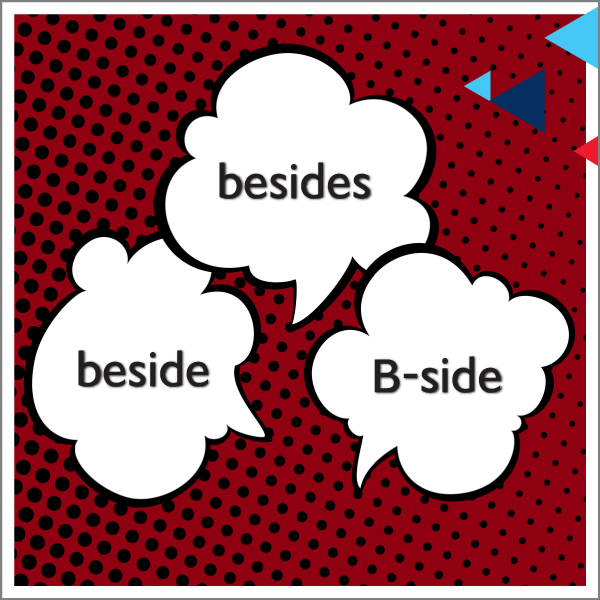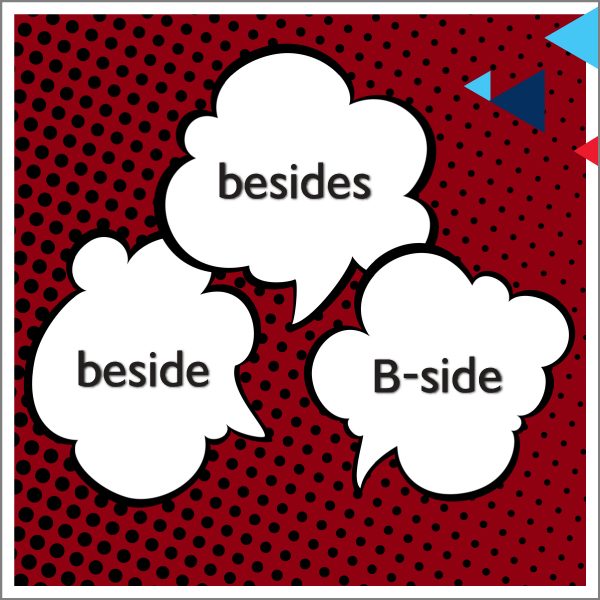
Beside – Besides – B-Side : These three terms can sometimes be confusing due to their similar pronunciations. Unless we pay attention to the context of the sentence, we can derive a mistaken meaning if we are not careful. Here are brief descriptions of each term:
‘Beside’ is a frequently used preposition with the meaning of ‘at the side of’ or ‘next to.’ It helps clarify the position of related items.
Examples –
There was a large unidentified object beside my bed last night.
That annoying guy was walking beside me the entire time I was running.
Stand beside each other, come what may.
‘Besides’ can be both preposition or a linking adverb used to connect two separate sentences. The former means ‘in addition to’ or ‘apart from,’ while the latter has the meaning of ‘as well,’ ‘moreover,’ or ‘furthermore.’ Usually, as a linking adverb, it is written with a comma before and after.
Examples –
It’s the first time that he seems engaged in something besides himself.
We’re too exhausted to continue this project. Besides, the budget is too limited.
I think he should accept more assignments, and besides, he wants to.
‘B-side’ is a term originating from the analogue age when cassette tapes and vinyl records were still widely played. It refers to the opposite side of a tape or a record to the ‘A-side,’ which is considered the more important side, usually featuring a hit song. Meanwhile, the B-side may feature more experimental, rare, or less promoted songs. The B-side may also include instrumental or remixed versions of the song on the A-side. In the current digital age, in which the concept of physical ‘sides’ to recorded music is less relevant, the term ‘B-side’ has largely been replaced by the term ‘bonus track.’




